Marriage Equality Timeline
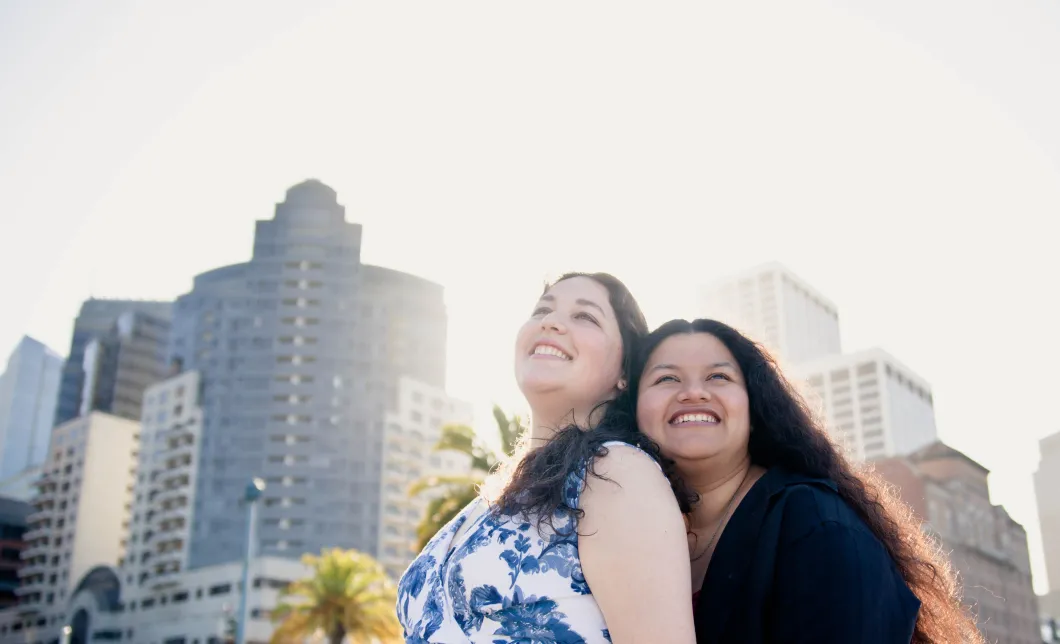 Photo by Sarah Deragon
Photo by Sarah Deragon
The Supreme Court’s June 2015 decision bringing marriage equality to every state is the culmination of years of hard work by movement organizations and their leaders, as well as millions of people who set out to change hearts and minds, one person at a time. The Evelyn and Walter Haas, Jr. Fund has been deeply involved in this fight from the start, investing $39 million over the last 14 years. Learn how the movement evolved over the years, how our partners did heroic work to move marriage forward, and how we got to where we are today.
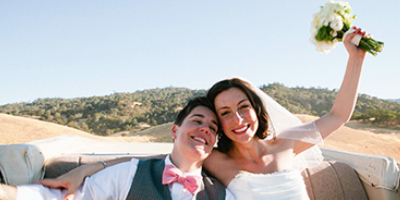
2001
The Haas, Jr. Fund becomes the first foundation, gay or straight, to embrace marriage equality as a major priority. The Fund supports the creation of Freedom to Marry to serve as a unifying force for those working on this issue. At this time, no state in the country offers gay and lesbian couples the freedom to marry, and only one state (Vermont) permits same sex couples to enter into civil unions that offer some of the benefits and protections of marriage. In addition, the federal Defense of Marriage Act (DOMA), enacted in 1996, restricts federal marriage benefits to opposite-sex couples only.
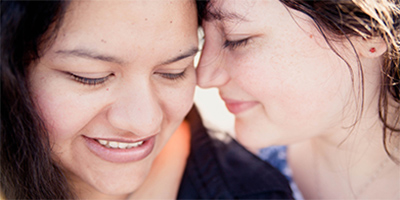
2002
The Haas, Jr. Fund makes its first grants to support marriage equality in its home state. With a grant from the Fund, the California Alliance for Pride and Equality (the predecessor to Equality California) forms the California Freedom to Marry Coalition. Nationally, the Fund commits $2.5 million over the next five years to support Freedom to Marry. (At the time, this was the largest grant ever made to a gay organization by a foundation.)
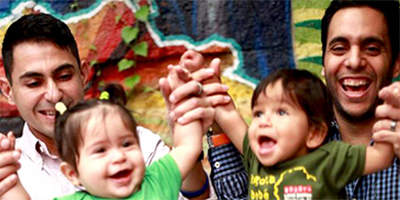
2003
Freedom to Marry officially launches, and convenes the first-ever meeting in Massachusetts between gay marriage activists and African American faith leaders. The Fund continues supporting nondiscrimination efforts, based on the premise that states can’t move forward on marriage until they first extend basic civil rights protections to their gay citizens.
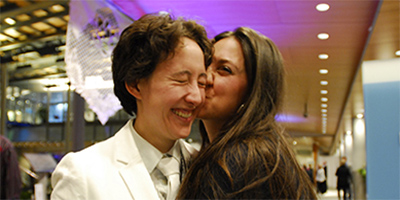
2004
As a result of litigation brought by Fund grantee Gay & Lesbian Advocates & Defenders (GLAD), Massachusetts becomes the first marriage equality state in the country. San Francisco Mayor Gavin Newsom directs city officials to issue marriage licenses to gay couples, bringing more national attention to the issue. The Haas, Jr. Fund helps form the Civil Marriage Collaborative, which brings leading funders of gay and lesbian equality together to promote state-based public education efforts to support the freedom to marry. As voters in 13 states adopt anti-marriage equality constitutional amendments, the Fund’s trustees approve a $2 million grant to help the four national gay legal groups (Gay & Lesbian Advocates & Defenders, Lambda Legal, National Center for Lesbian Rights, and The LGBT Project of the ACLU) implement a coordinated litigation strategy.
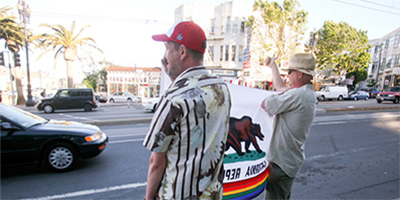
2005
The Gill Foundation and the Haas, Jr. Fund take the lead in convening key gay rights organizations to develop a shared vision and plan for winning marriage. This results in the “10/10/10/20” framework, around which funders and organizations align their resources. (10/10/10/20 set the goal of bringing the nation to a national resolution on marriage by securing marriage or some form of relationship recognition in 30 states over 20 years.) The Fund makes a $500,000 grant to help launch “Let California Ring,” a public education campaign to build support for marriage equality. During the year, the Fund increases its support for the national gay legal groups to pursue pro-marriage litigation in seven states. The Fund also begins the Haas Leadership Initiatives (HLI) to make additional investments in the leadership development of its grantees and makes a $235,000 grant over 3 years to the National Center for Lesbian Rights (NCLR). Since then, the Haas Leadership Initiatives have granted $2.7 million to strengthen the Fund’s marriage equality grantees.
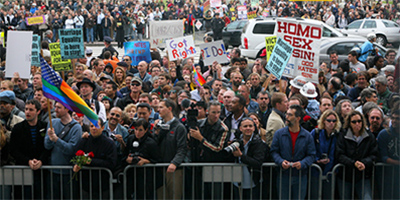
2006
Anti-gay activists across the country continue their push for state amendments banning same sex marriage and the number of states with these measures rises to 24. The Fund and its partners support research to develop effective marriage messaging. This represents the first-ever serious investment in trying to understand what is driving anti-marriage equality sentiment and come up with ways to address fears and concerns.
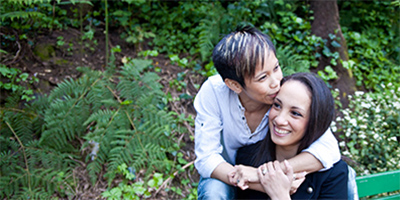
2007
The Fund joins with the Gill Foundation and an anonymous donor to create the State Equality Fund to support non-lobbying educational work to advance equality for gays and lesbians, including safer schools, nondiscrimination and civil unions as important stepping stones to marriage equality. The Haas, Jr. Fund also launches a major initiative to support the Institute for Welcoming Resources, its partners and other faith groups to change hearts and minds on gay equality among people of faith. As a result of this work, thousands more religious leaders and people of faith become advocates for gay equality, and four of the five major mainline Protestant denominations eventually repeal anti-gay policies.
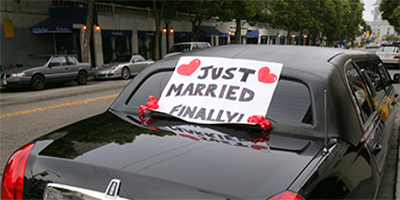
2008
In May, as a result of a court case brought by NCLR, the California Supreme Court overturns the state’s ban on same sex marriage, and 18,000 couples are married. The Fund invests an additional $2 million in public education work, primarily focused on people of color communities in the state. In November, voters pass Proposition 8, overturning the state Supreme Court’s marriage equality ruling. The Fund backs a new round of research to understand how to reach and move people on the importance of marriage equality.

2009
Iowa, Vermont, New Hampshire and the District of Columbia become freedom to marry jurisdictions. In California, the state Supreme Court upholds Prop. 8 but rules that the marriages between June and November 2008 remain valid. Voters in Maine repeal the state’s new marriage equality law by a margin of 53% to 47%. Based on deep research into the views of Protestant clergy, the Fund helps create "Believe Out Loud," a strategic messaging project aimed at pro-gay, but largely silent faith leaders. The number of congregations that have voted to be "Welcoming and Affirming" of gay people, an effort led by Fund grantees, increases to over 3,000. In the Perry v. Schwarzenegger case, two gay couples file a lawsuit in federal court arguing that Prop. 8 is unconstitutional.
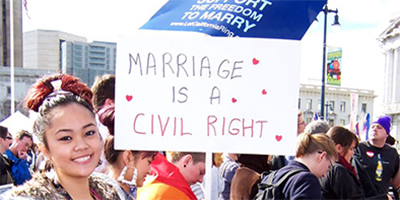
2010
The Fund continues investing in marriage equality messaging research and a study to understand the unreliability of pre-election polls on the issue of marriage. The Civil Marriage Collaborative also invests heavily in research in Maine, where in 2009, voters overturned a new marriage equality law. With Fund support, Freedom to Marry dramatically increases its staff and budget and becomes a full-fledged, on-the-ground national marriage equality campaign. The Fund makes a $200,000 grant to Liberty Hill Foundation to build a network of people of color organizations in California supporting marriage equality. In December, the Haas, Jr. Fund joins in celebrating the repeal of the “Don’t Ask, Don’t Tell” law that prevented gays and lesbians from serving openly in the military, marking a crucial gain in acceptance for gay people in American society. Longtime Fund grantees the Palm Center and Servicemembers Legal Defense Network play critical roles in undermining the rationale for "Don't Ask, Don't Tell."
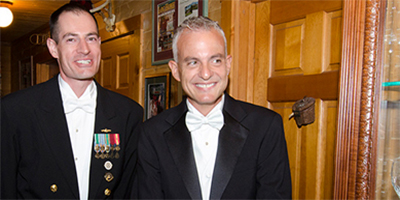
2011
In February, the Obama Administration instructs the Department of Justice to stop defending DOMA in court. In June, New York Governor Andrew Cuomo signs a marriage equality bill into law, more than doubling the number of Americans living in marriage equality states to 11.3%. A public education media campaign in Oregon (supported by the Civil Marriage Collaborative) increases support for marriage by 3% while decreasing opposition by 4%. In California, the Haas, Jr. Fund initiates the Breakthrough Conversation Project to get more gay people to talk about issues of equality with family, friends and neighbors. The project is based on research showing that when these personal conversations take place, support for equality increases dramatically.
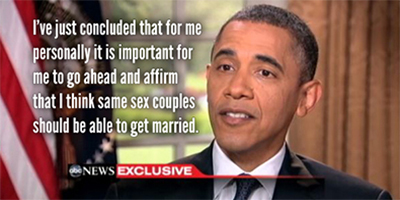
2012
President Obama says in a television interview, “I’ve just concluded that for me personally it is important for me to go ahead and affirm that I think same sex couples should be able to get married.” For the first time, public opinion polls begin to show a national majority supporting marriage equality for same sex couples. As a number of cases brought by the national gay legal groups challenging the Defense of Marriage Act (DOMA) move forward, the Fund also invests in public opinion and messaging research on DOMA. With Fund support, Many Voices and the Umoja project work to build support for gay equality among African American faith leaders in key states. In November, voters in all four states with marriage on the ballot embrace equality (Maine, Maryland, Minnesota and Washington). Pro-gay faith leaders and communities from denominations that are partners of the Institute for Welcoming Resources are key players in the marriage contests.
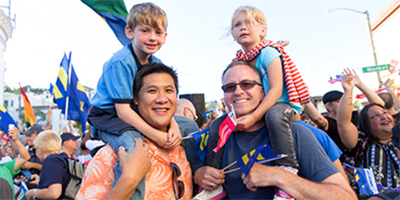
2013
In June, as a result of a carefully-planned litigation strategy of the four national gay legal groups, backed by the Fund, the U.S. Supreme Court in Windsor v. U.S. strikes down the Defense of Marriage Act as unconstitutional, opening the door for gay married couples to secure equal rights and responsibilities under federal law. At the same time, the court's ruling in Hollingsworth v. Perry, on technical grounds, results in same sex marriage being restored in California. By year’s end, a combination of judicial rulings and legislative action brings the total number of marriage equality states to 17, covering 40% of the U.S. population.
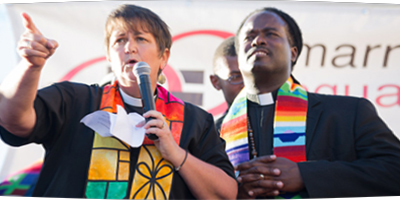
2014
The Fund helps raise $500,000 in additional support for post-Windsor litigation by the four national gay legal groups and for these groups to provide assistance in cases being handled by private attorneys. This litigation results in more decisions striking down state bans on same sex marriage. In October, the Supreme Court denies review of five different marriage cases, clearing the way for lower court, pro-equality rulings in 11 states to take effect. In November, the 6th Circuit U.S. Court of Appeals reverses six pro-marriage rulings by lower courts, requiring the Supreme Court to resolve the issue once and for all. By year’s end, 37 states and the District of Columbia enjoy the freedom to marry. They account for 70% of the U.S. population.
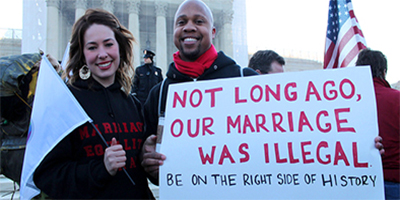
2015
In January, the Supreme Court announces that it will take up four marriage equality cases for consideration. Anti-equality forces in more than 20 states respond to recent gains for marriage equality by introducing “religious liberty” legislation that would allow individuals and businesses to discriminate against gay married couples. Five of these measures become law. The Fund makes nearly $1 million in grants to help grantees and movement partners mobilize to educate the public about the harmful nature of these measures. The Supreme Court hears oral arguments in the marriage cases in April, and decides in June that state bans on marriage for same-sex couples are unconstitutional. This decision extends the freedom to marry coast-to-coast. The Fund’s contributions to the struggle for marriage equality reach $39 million.
The Haas, Jr. Fund applauds the extraordinary work of the marriage equality movement and all of those who continue to work toward the goal of ensuring that gay and lesbian people and their families are able to participate fully—and equally—in American society.